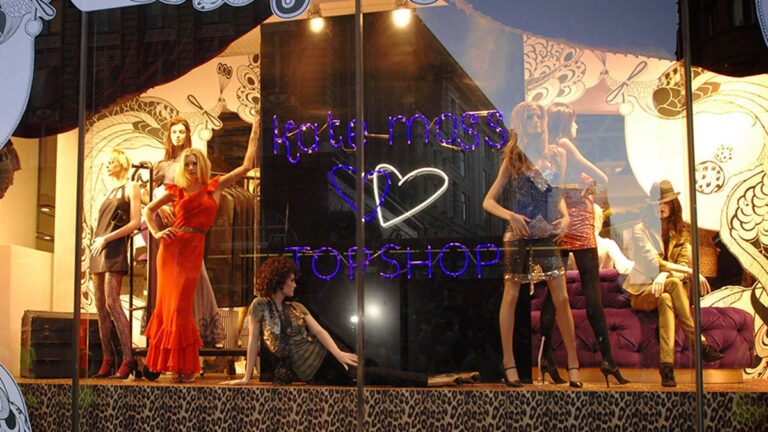Now, as it branches out of Asos, Topshop’s new majority owners need to consider who the audience is. The brand currently has 12 million Instagram followers, many of them legacy followers, Ridgers says, so the engagement is very low (based on likes and comments of recent posts). To scale on Instagram and to win on Tikok, the brand will need to invest in video looking ahead, and place creators at the forefront of the brand. “UK brands are good at working with creators, but none have powerful long-term ambassadors like Topshop had,” she says. “Topshop should work with a selection of diverse British creators who can really represent the brand, inspire old and new audiences and help with storytelling.”
The focus should be millennials, and if it goes too hard on Gen Z and the micro-trend cycle, Topshop may not regain resonance, experts agree. “They have two options,” says Topshop alum Ridgers. They either go back to what they used to do and follow a more traditional route, with fashion shows and longer trends cycles, or they can go for the fast and furious social media cycle. But if they want to hit millennials and go for that nostalgic Topshop audience, I feel [the former] would be more successful.”
“Topshop was really good at tapping into trends and getting them out pretty fast while still maintaining quality and being slightly different from everyone else,” Davidson says. “But the churn of trends is so quick now, by the time Topshop comes back, trends like Britishcore could be waning.”
Rather than trying to fit in with the micro-trend cycle, tapping into its indie sleaze, noughties heritage to win back the millennial shopper would likely help Topshop chime with Gen Z anyway. From blokecore and Britpop to Y2K, young consumers today are inspired by fashion eras they didn’t even live through, based on nostalgic content they see online.
Homer agrees that Topshop should lean on its heritage and the emotion it evokes in its fans. “There’s a very big difference between carrying the name of a brand and an actual brand,’ she says. “The difference is, there was an emotion attached to Topshop. Whereas other brands, you just go and you shop and you think, ‘Oh, you know, I’ll go and have a look.’ You can’t get that emotion anywhere else.”
Comments, questions or feedback? Email us at feedback@voguebusiness.com.
More from this author:
Who won fashion month on social media?
The Vogue Business Spring/Summer 2025 size inclusivity report
The Vogue Business TikTok Trend Tracker


